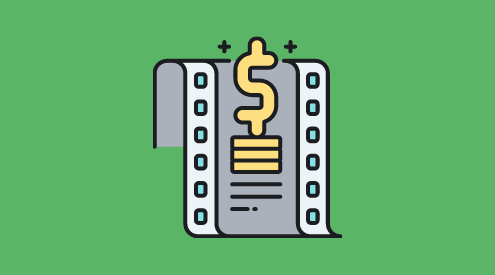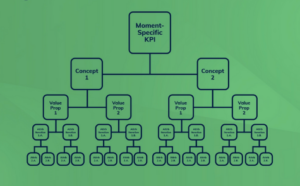How to Maximize Your Video Production Budget

This blog offers creative advice on how maximizing your production budget can reduce the time, cost, and subjectivity of video creation!
What’s the most important step in the video production process? Your gut instinct is probably the shoot. After all, that’s where the “magic” happens, and you get to visually see the creative concepts in your head come to life.
If you’ve run a video marketing campaign before, you may point to post-production as the most important step in the process. This is where your videos begin to fully take shape as editors craft your ads’ pace, and animators and graphic designers add in the visual effects that can really make your videos pop.
As video professionals, we find that the most important step in the process actually takes place well before you get anyone in front of, or behind, the camera. It’s in how you maximize your budget in the pre-production stage. You can have an ingenious concept, but if you do not have the budget to support your video creative, your campaign will be dead in the water before you can even set sail.
Maximizing your existing budget may sound like a tall order, but it simply means bringing efficiency into the video production process. You want to look for opportunities to cut the fat from your production schedule to ensure that you have low-cost solutions to big-budget problems.
Thanks to recent advancements in video technology, and a renewed emphasis on streamlining the production process, the cost of video ads of all types (including broadcast-quality) have dropped considerably. Simply put, you can do more with video than ever before, and at a fraction of the price, so long as you strategize your video production.
Easier said than done though, right? Don’t worry, we’ve got the actionable tips you need to maximize your video production budget, bring efficiency into the entire process, and still meet all the needs of your concept!
Learn More: Social Media Video Ad Specs & Placements Guide
Maximizing Your Video Production Budget: Strategies
Review Production Costs
Before you can start finding ways to maximize your budget, first ask yourself: how much are you already spending on video creative? Run an audit on your historical production budgets, focusing on the key metrics that drive up campaign costs.
Doing a post-mortem of sorts after video campaigns have wrapped will surface line items that may have been extraneous. Some of the important cost drivers you should keep in mind when reviewing your budget:
- KPIs: Determining the goals of your campaign will help you decide what type of video you want to produce, the platforms you want your creatives to run on, and how many versions of the video you’ll need to generate to make the greatest impact on your objectives.
- Concept: Your concept will determine everything from your shoot’s location, if you’ll require any special sets or props, as well as the kind of talent and production crew you’ll need to hire. These key factors you surface during concepting are major determinants for the overall cost of your video production.
- Location: The location of your production will be determined by a number of factors from the visual look and narrative arc of your ad, to the video type you choose. Animated videos and stop motion ads can easily be created in a home or professional studio, while live action commercials often take place on location, or in outdoor settings.
- Talent: Talent can range from professional actors and models, to real-life customers and even animals. Each kind of talent comes with their own unique cost drivers, from handler fees when working with animals to the day rates of professional union actors.
Even if you’ve never run a video campaign before, you can still surface budgetary insights by reviewing costs for static image ad campaigns. How much did you spend for photographers, or graphic designers? Did you use animation? Did you hire models?
Another important thing to consider if you’ve run a video campaign before: did you go over budget? If so, identify the areas where your budget ballooned and prioritize driving those costs down. That could mean isolating your creative to one location, or scaling back your big-picture concept.
DISCOVER OTHER COST DRIVERS: Video Marketing Production Costs: Pricing & Advertising Rates Explained
Thorough Pre-Production
Use your review of historical production costs as a launching pad into pre-production planning. This important step is where you begin identifying opportunities to bring efficiency to the production process that can maximize your existing budget. Compare the typical cost drivers of different video types with your campaign goals to build a production budget range. This way, you know just how big or small you can go with your creative concept.
Define the purpose of your campaign, the platforms you want your ad creative to run on, and the goals you wish to achieve. Establishing clear KPIs will help not only in crafting your creative concept, but also provide a richer understanding of the amount of footage you’ll need to capture. Thoroughly expressing your concept and campaign goals in pre-production ensures that you won’t run into costly, unexpected issues in the post-production process (such as the need for a reshoot or additional editing rounds).
When crafting your creative concept, always remain conscious of your budget. Know that a shoot may run longer, and cost more, if your concept requires special talent, animals, multiple locations, props, or costumes.
The more specific your design needs are, the more your budget will increase. Consider ways to streamline your narrative so that you can still tell a compelling story, without increasing your overall production costs.
Plan for a Single Shoot
At QuickFrame, we design campaigns and production in a cost-effective way by identifying target audiences and KPIs at the start, and then designing a production plan that captures a wide variety of footage for every video asset you’ll need (e.g, multiple aspect ratios or different talent) in a single shoot.
One way to ensure that you are getting all of the footage you’ll need for your campaign is by creating an exhaustive shot list. This will serve as the building blocks of every deliverable.
One way to create a shotlist is through storyboarding, where a designer creates a visual breakdown, shot-by-shot, of the individual scenes in your video. However, this process requires specialized artists with unique skill sets, which can inflate the bottom line of your video marketing production budget. This may be the path you want to take if you’re planning a high-profile, broadcast-ready campaign.
But not every video project requires a round of storyboarding, especially if your concept isn’t complex. Instead, to stay budget conscious, create a shot list by going beat by beat through your script, isolating the images you want to focus on in each segment. Aim to be as specific as possible—this will give the makers producing your video a clear picture of the concept that lives in your head.
This UGC-style ad from MoneyLion, created with QuickFrame, kept production costs low by utilizing one simple outdoor location and taking a UGC-style approach.
Repurpose Existing Assets
One of the best ways to keep video marketing production costs down is by repurposing assets through post-production editing. This means taking existing footage or stills from previous campaigns and editing them to make a brand new asset. This is a cost-efficient way to reinvent an old ad campaign, or launch an entirely new one, without having to spend extra time and money shooting a library of new footage.
LEARN MORE: 4 Ways to Repurpose Assets for Video Marketing
Post-production editing is also a great option if you want to use the same creative assets on different platforms that only require simple resizing or length cutdowns. You can also rework messaging on existing creative by changing on-screen text or adding a new voiceover.
This QuickFrame produced Explainer gives you four unique ways you can use repurposed assets to create fresh video creative.
Conduct Creative Testing to Generate Insights
A great way to optimize your creative budget, especially for performance marketing campaigns, is by using a multivariate testing plan. With this strategy, you can systematically test various creative variables to see which approaches perform best at driving your KPIs.
A thorough creative testing plan will also give you a better understanding of how you can further maximize your budget for future campaigns. We have an entire blog post dedicated to multivariate testing, but this flowchart will give you a taste of what this strategy might look like in action:

In just a matter of weeks, a testing plan like the one above will reveal which creative approaches are performing best at achieving your campaign objectives. With each round of performance testing, you zero-in on the creative approaches that work for your brand—all while driving your KPIs.
This process brings objectivity to the traditionally subjective process of creative concepting, saving you time and money in the long run.
LAUNCH A MULTIVARIATE TESTING PLAN: Learn more about Performance Marketing with QuickFrame
QuickFrame client Stance used a performance testing plan to increase ROAS 2.5X while keeping video production costs low.
Plan for All Deliverables at the Start
It goes without saying that if your makers have to go back again and again to re-edit a video in post-production, your schedule can quickly get derailed and your campaign’s overall costs would easily increase. To maximize your budget in post-production, plan for every deliverable your campaign requires in the pre-production process..
In conjunction with a clear creative testing plan, bundling your deliverables will ensure that you don’t forget about specific aspect ratios, video lengths, or file types your assets will need to be in. If you plan thoroughly from the start of the pre-production process, you’ll be able to get every video asset you need, for every platform they’ll run on, in a single editing round.
This eliminates the need for reshoots, re-edits, or new animations—all of which can quickly balloon your production costs.
Maximizing Your Video Production Budget: The Takeaway
The fact is that creating high quality marketing videos that perform can be costly and time-consuming. But with thorough pre-production planning—and a discerning eye—you can keep production costs down so you can turn what you want to do into what you can do.
Fortunately, producing a video has never been more affordable. And as the appetite for video intensifies, being able to affordably generate a stream of new and relevant video ads will make your brand stand out in a rising sea of competitors.
But there’s another way to make your production process more efficient: QuickFrame’s production marketplace. We streamline the production process by connecting brands from every industry with professional video content makers and video production companies that can produce video at-scale affordably.
It’s not too good to be true – it’s just how we do business.
PRODUCE VIDEO THAT PERFORMS: Learn more about how QuickFrame works
Do More with Video
Learn how we can help you produce more quality videos affordably and at scale.



